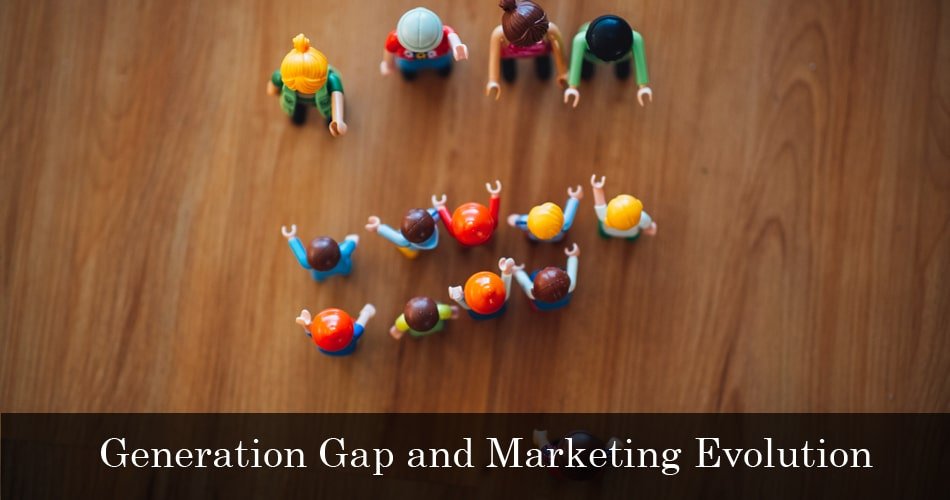Generation Gap and Marketing Evolution

Marketing evolution refers to the various stages companies undergo to find innovative ways to generate and grow income through client sales and relationships. It progresses slowly, with marketing concepts and approaches constantly changing over time and generations. Marketers must adopt suitable strategies to meet customer needs. Failure to adapt can result in losing market relevance, while successful marketers embrace change.
Today’s market offerings are a product of marketing evolution, which eliminates outdated practices and adopts effective ones to satisfy customers. Let’s explore key phases in marketing evolution:
Marketing 1.0: Product-Centric
In the 1950s, Marketing 1.0 emerged in the USA, focusing on product-centric strategies to serve affluent Baby Boomers. The aim was to create perfect products and services that delivered maximum value. Companies prioritized product development, management, and the Four Ps: product, price, place, and promotion. However, this era often led to consumerism, where people bought things they didn’t need.
Marketing 2.0: Customer-Centric
The anti-consumerism and counterculture movements of the mid-1960s to mid-1970s, coupled with the 1980s recession, shifted marketing to a customer-centric approach. Marketers began understanding market segmentation and targeting, focusing on features that consumers wanted. Businesses worked on building long-term customer relationships and shifted their goals from satisfaction to retention.
Marketing 3.0: Human-Centric
The rise of Generation Y and the late 2000s global financial crisis spurred Marketing 3.0. Customers, disillusioned by financial scandals, demanded products, services, and cultures with positive societal and ecological impacts. Companies started incorporating ethical and socially responsible practices into their business models.
Marketing 4.0: Traditional to Digital
With digitalization, Marketing 4.0 emerged, further enhancing human-centricity. The advent of mobile internet, social media, and e-commerce changed the customer journey. Marketers responded by creating an omnichannel presence, transitioning from traditional to digital marketing.
Marketing 5.0: Technology for Humanity
As Generation Z and Generation Alpha rise, marketing evolves to integrate human-centricity with technological advancement. These generations seek positive world changes and improved human lives through technology. Marketing 5.0 combines the principles of Marketing 3.0 and 4.0, leveraging the latest technology to enhance human lives. Companies that earn the trust of these new generations will likely succeed in this era.
Conclusion
Marketing evolution demonstrates the industry’s shift from a product-centric to a human-centric approach, now integrating advanced technology to improve lives. Understanding these phases helps marketers adapt to changing customer needs and market dynamics, ensuring long-term success.